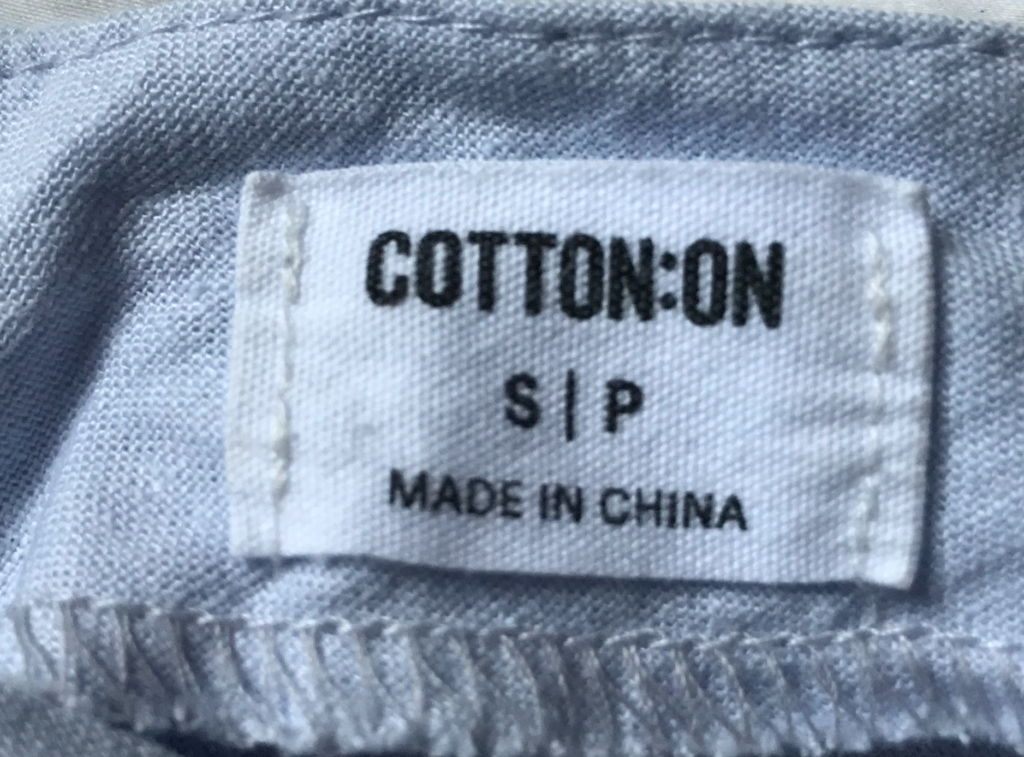Jorja Rehfisch, 19, is your classic Generation Z. Rehfisch is environmentally aware, and has a strong passion for social justice. Her interest in social issues has led her to study politics, philosophy, and economics at Monash University, in Melbourne.
She is also an avid consumer of fast fashion. Rehfisch’s wardrobe consists mostly of the fast fashion brands Glassons and Cotton On. She told me she is influenced by “trendiness.”
Generation Z, born between 1997 and 2012, are known for their understanding of environmental and social issues. Yet, this generation is becoming recognised for its obsession with low-cost fashion.
“It’s very intertwined with what’s trending, whether that be on social media and in real life,” says Eugenie Dixon, a member of Generation Z. Dixon is a RMIT student. She, 19, told me that evolving trends had fuelled a desire in young people to buy whole new wardrobes depending on what fashion style is popular.
Fast fashion is the term used for fashion brands that subscribe to a business model of mass production. These brands recreate more expensive designs at a low-cost.
The fashion industry currently lacks an official code of ethical conduct, providing context for why fast fashion’s mass production has flourished, unchecked.
There are organisations that have established frameworks for the industry. This includes the Sustainable Apparel Coalition’s HIGG index (a program where companies self-assess the environmental and social sustainability of their supply chains), and the OECD’s ‘due diligence guidance’ for ‘responsible supply chains.’
Both these frameworks are voluntary. They are not legally binding documents. This means even brands that choose to sign the frameworks will face no legal repercussions for their failure to adhere to regulations established in the frameworks.
While individual brands may choose to implement their own internal code of ethics into their business model, there is no requirement actually to abide by any company policies. This gives companies like Shein the power to pay their Chinese factory workers 0.27 yuan, or 58 Australian cents. The Shein ‘Code Of Ethics’, available on the brand’s website, states it “strives to meet the highest labour standards” while “maintaining working environments that respect individuals’ dignity.”
Fast fashion’s links to environmental damage and human rights abuses are well established, yet many Generation Z continue to consume from brands including Zara, Shien, H&M and Glassons.

As a young university student, the cheaper costs of these brands are preferable to Jorja Rehfisch. She told me Glassons and Cotton On are more appealing because she is already familiar with their clothing quality, and it is convenient to keep buying brands she is already satisfied with.
Despite this, it seems the main allure of fast fashion is not cost or convenience; for Gen Z, the obsession stems from a desire for trendiness.
The attraction of these brands for many Gen Z, is their ability to replicate fashion trends, when demand is highest. Brands with ethical production, termed ‘slow fashion’, cannot match the mass production model that fast fashion is based on.
Rehfisch’s method of changing her wardrobe based on “how [she’s] feeling” mimics the attitudes of many of her Gen Z peers, who have $150 billion in spending power.
“Trends change so often, if you’re constantly buying from ethical brands, you’re not going to be able to keep up,” she told me.

Not only are members of Gen Z consuming fashion excessively to keep up with trends themselves, there is also an interest in constantly purchasing items to sell them for profit.
Lee Callister is an Art & Design Director, with three decades of experience in the advertising industry. He told me that “fashion is a currency”, that has become increasingly “temporary” in online communities such as Depop, where clothes taken from secondhand shops are resold at higher prices.
Callister says the increasing influence of the internet has ensured that if you want to be “found by young people”, TikTok, Instagram and Facebook is “where you want to be talking to them.” Generation Z are more influenced by their peers’ perception of what is popular, rather than advertising appeals.
He notes the cyclical nature of the fashion industry means the “only constant is change” and that “there’ll be something different tomorrow.”
Generation Z’s fast fashion obsession is at odds with their attitudes towards workplace rights and environmental protection. They are influenced by economic interests and trends to partake in excessive consumerism.
The dichotomy between Generation Z’s values and actions continues to widen.
(Featured Image: This is a typical ‘Gen Z wardrobe’. It consists of items that align with current trends. Photo credit: Lucy Slevison.)

